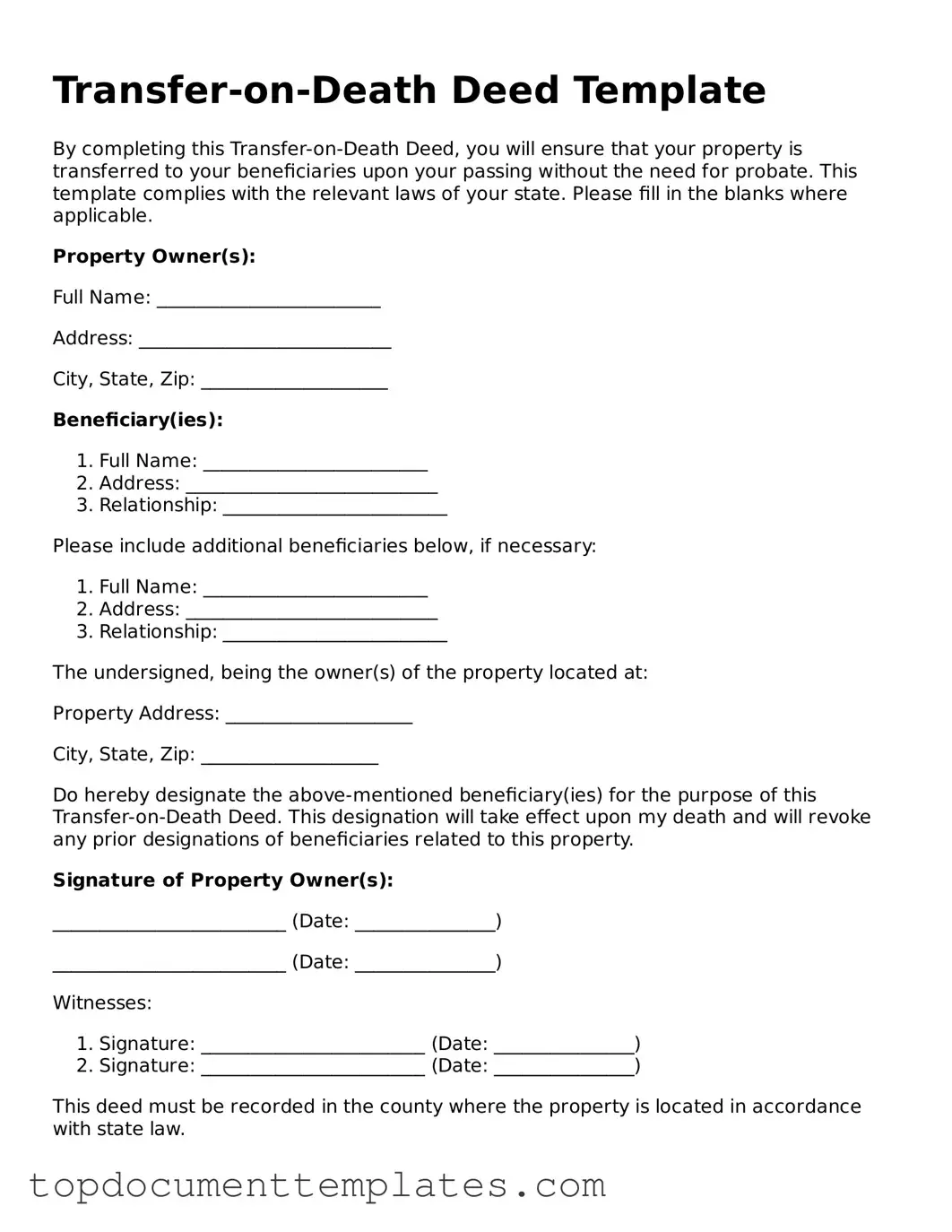The Transfer-on-Death Deed (TODD) form serves as a valuable estate planning tool that allows individuals to designate beneficiaries for their real property. This form enables property owners to transfer their assets directly to their chosen heirs upon their passing, bypassing the often lengthy and costly probate process. By completing a TODD, individuals can maintain control over their property during their lifetime while ensuring a smooth transition of ownership after death. It is essential to understand that this deed only applies to real estate and does not affect other assets, such as bank accounts or personal belongings. Additionally, the TODD must be properly executed and recorded to be valid, which typically involves signing in front of a notary and filing with the appropriate local office. This straightforward process can provide peace of mind, knowing that loved ones will receive the property without unnecessary complications. Understanding the nuances of the Transfer-on-Death Deed form is crucial for anyone looking to simplify their estate planning and secure their legacy for future generations.
